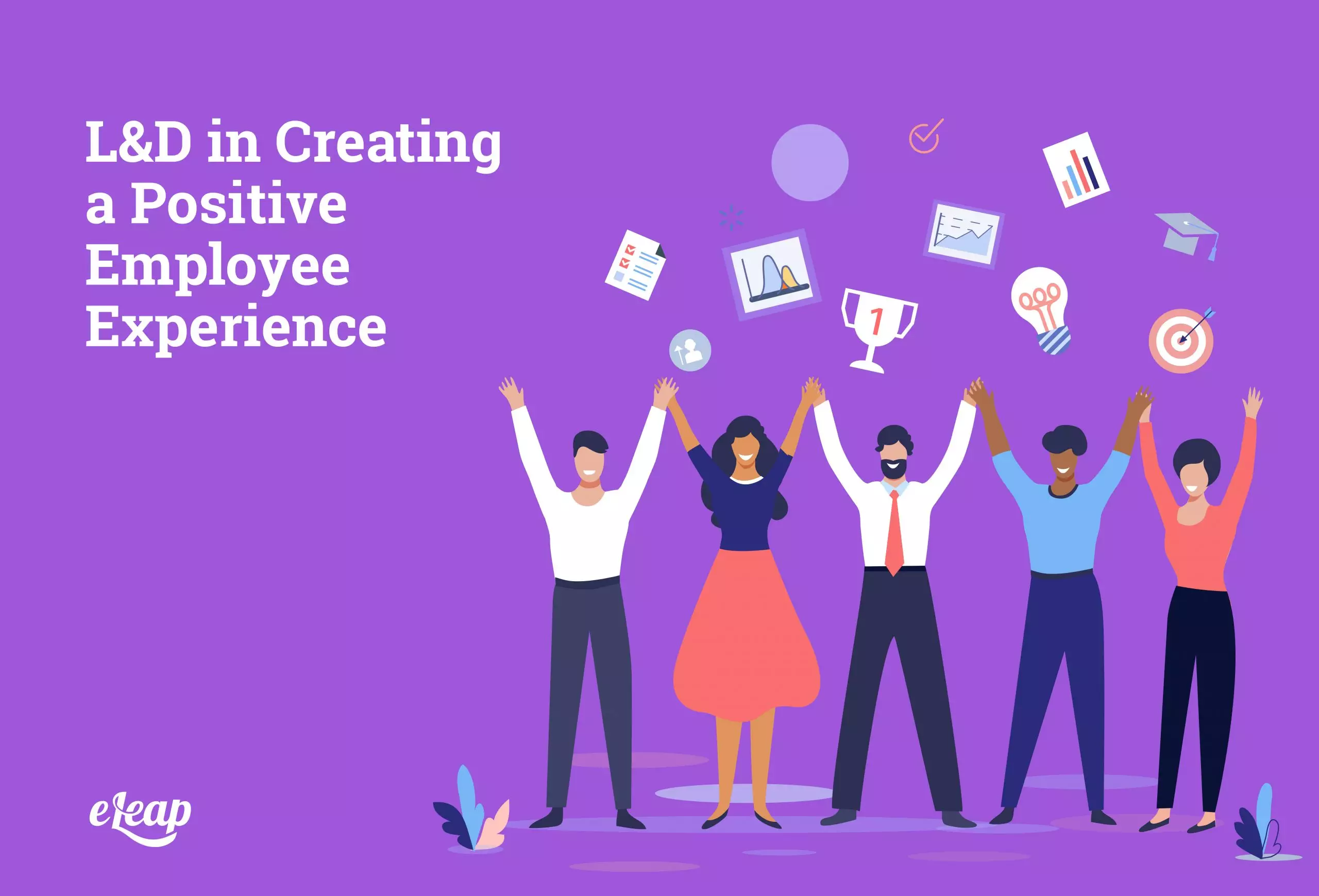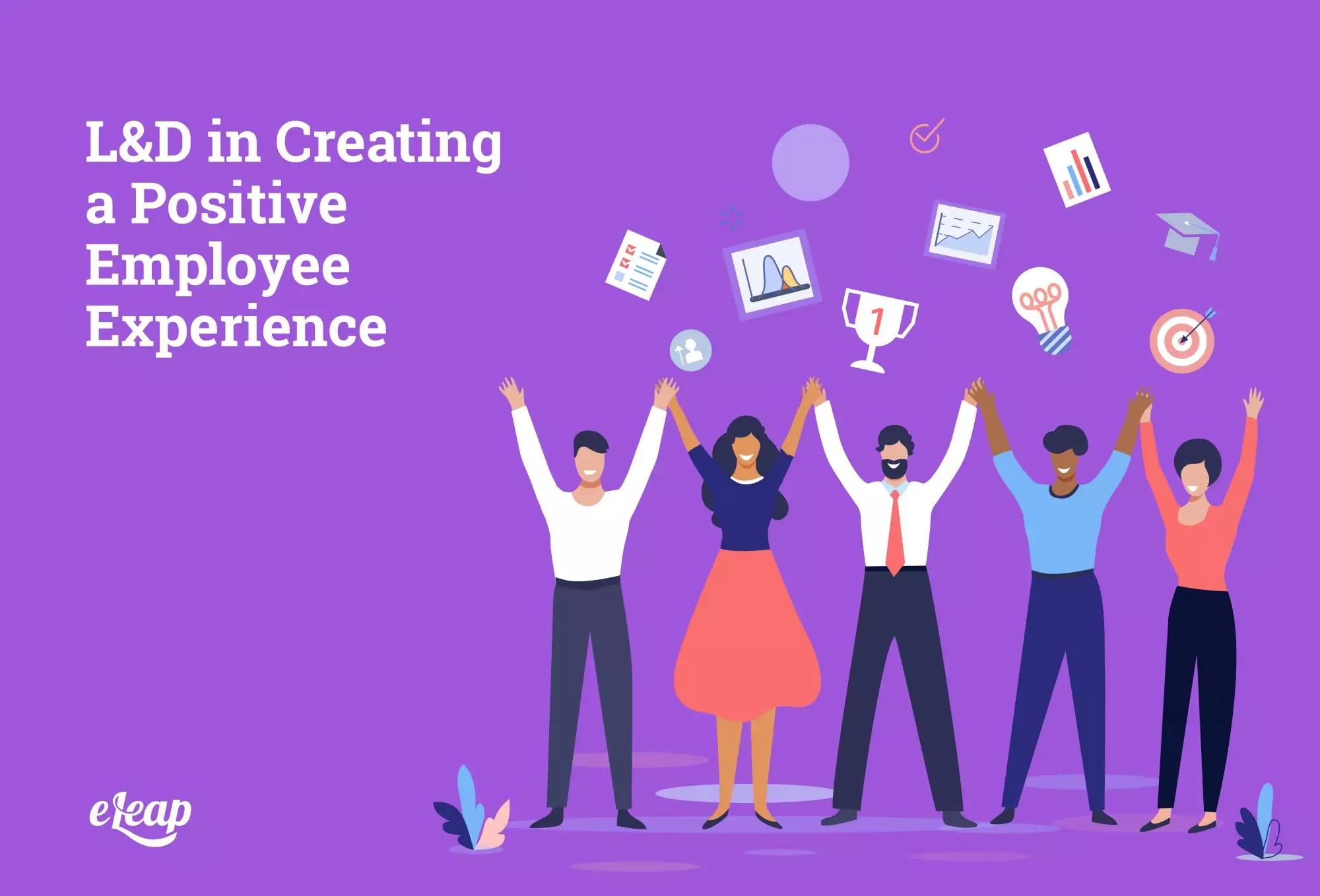L&D in Creating a Positive Employee Experience

Talent retention has become a critical consideration. Many factors have led us here. There’s a shortage of skilled professionals today. Employees are more willing to jump ship to another employer if they perceive they will have a better experience. Company culture kills employee/employer relationships. The list goes on.
Thankfully, you can improve your talent retention and solve a slew of business problems (including implementing a strategic hiring plan, promoting from within, and building stronger, more effective teams) when you invest in the right L&D initiatives and create a positive employee experience.
Not sure what it’s all about? Curious why the employee experience matters so much today? We’ll explore what you need to know in this post.

What’s Employee Experience All About?
For the last decade or so, there’s been an ongoing discussion about customer experience. The focus has been on creating a seamless, positive experience, whether they’re shopping through your website, dealing with customer service on the phone, or interacting with you on social media. It makes sense – a positive customer experience results in better customer satisfaction, which in turn drives loyalty and repeat purchases. It even turns customers into brand ambassadors.
The same thing can be true for your employees. Imagine – rather than a constant revolving door and massive churn (accompanied by the high costs of onboarding new employees all the time), you identify key talent, engage them, hire them, build them up, and retain them over time. How much better would it be if your employees entered the business and moved up to higher and higher positions, rather than leaving to pursue something more rewarding?
It’s all about employee experience. If you’re able to deliver a positive experience, more employees will stay with you. You’ll reduce churn and cut costs, while simultaneously ensuring that you have the right talent in place at all levels within the organization.
Employee experience matters to the success of the organization. It matters to forward momentum, to profitability, and to creating a positive culture while positioning your business as an employer of choice, not one of last resort.
The Role of Learning and Professional Development in Employee Experience
Think about this – when are you happiest, when you’re disengaged from people and events around you, or when you’re engaged and working to build something better? For most of us, it’s the latter. The same is true for your employees.
Learning and development are critical considerations here. With the right focus on L&D, you can create a sense of belonging, a sense of connection, and forge a positive employee experience. The desire to learn and grow is very strong within your employees and if you’re able to fuel that fire, they’ll reward you.
Consider the following:
- 75% of managers today report wanting more training
- 72% of Millennials look for L&D opportunities with employers
- 64% of Gen Xers look for L&D opportunities with employers
Those numbers are across the board, too. They’re not confined to entry-level positions where you might think people were hungriest to move ahead. Employees at all levels, from the newest hire in your business to C-level execs value the opportunity to learn, grow, and develop themselves.
Upskilling Benefits
As part of your L&D initiative, upskilling is vital. There is a definite skills gap in the workplace, and upskilling is the only way to close it. The right LMS can help make upskilling possible and accessible.
However, if your company culture doesn’t focus on creating a positive employee experience and supporting professional development through learning and development, it won’t matter what LMS you have in place. It all begins with your company and the environment. If you support learning, experimentation, and growth, your employees will see the value of upskilling and will be more likely to take every opportunity to improve themselves.
On the other hand, if your company culture denigrates growth, or sees experimentation and learning as “too costly”, your employees will look for opportunities elsewhere. Those that remain will reinforce that negative environment, driving away new hires who want the chance to make more of themselves. The result? A stunted company with a negative culture that cannot compete.
Creating a Growth Mindset
An integral part of a positive employee experience is a growth mindset. If you cannot create a mindset that focuses on growth and development and then foster that across your organization, you’ll effectively cripple progress.
How do you create such a mindset, though? There are a lot of moving parts here. It begins with the attitudes and actions of your leaders. They must embrace the value of and need for learning and development and show that in their actions and decisions. It also begins with your onboarding process. When new employees come aboard, they should be immediately immersed in a positive culture where learning and development are prized. Even before they’re introduced to their team or their duties, they should understand the company’s position on L&D and its commitment to supporting their success and growth.
Beyond Professional Development
Creating a positive employee experience requires more than just investing in the right LMS and making professional development a cornerstone of your culture. It also requires that you intentionally support personal development, as well. How might you do that? There are quite a few options out there, including the following:
- Offer rewards, incentives, and bonuses that matter to your employees on a personal level. It’s not just about money or paid time off. Think outside the box and find ways to integrate rewards with deeper value.
- Offer a wellness stipend that your employees can use to help keep themselves fit, healthy, and feeling good.
- Help your employees discover their talents and passions, and then work toward developing those.
Positive Growth for All
When you’re able to create a positive employee experience, you’re able to attract and retain key talent. You can hire strategically, rather than following a stopgap method. You can close the skills gap, compete against other businesses in your industry, and more. In short, a positive employee experience creates positive growth and outcomes for everyone. It’s a win-win.